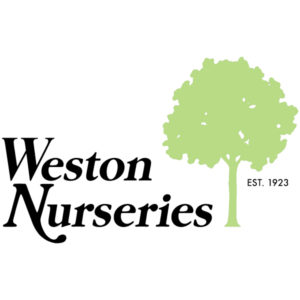Take a look at your backyard. How much of the space is lawn, and how much is flower beds, trees, and shrubs? Our gardens reward us so much that sometimes the effort we to put into planting can distract us from considering the bigger picture. We often forget to consider the grass, which can take up a much larger percentage of our landscape space.
Lawns tend to play a supporting role in our outdoor spaces, framing the big showstoppers like blooming trees and colorful flowers. But turf is still an important part of a lush and lovely yard. Proper lawn care is not just aesthetics, though- it’s also crucial for the health of the soil and grass under your feet.
Mud Season
As the weather starts warming up and the snow begins to melt, the first glimpse of your lawn under puddles can be tempting! Many of us are eager for the season to get underway, so our first instinct is to grab a rake and get to work – even with still half-frozen thatch.
Try to resist that urge to work on your yard at this stage. Working while your lawn is still soaked and frozen could end up doing more harm than good, damaging new and emerging shoots and compacting the soil. You might not be able to see it, but in the early spring your young grass shoots are battling it out with new weeds for space to grow. Your interventions will only hinder your grass as it tries to get a good start in the spring.
Thawing Troubleshooting
Snow mold is a type of soil-borne fungus that tolerates low temperatures and can emerge as a problem as the snow recedes in the spring. It’s unsightly and can even irritate allergies, but is generally only a temporary problem. Gray snow mold (typhula blight) is the more common and less severe variety of snow mold that we face here. You may notice silver-gray patches of it forming in circles on your lawn. Although unattractive, it rarely causes any actual damage and goes away by itself. Unless it’s thick enough to choke out the grass, we wouldn’t recommend risking more damage to your lawn by raking it off.
If you’re impatient as you wait for the warm days to melt away the snow, finding a project is the best defense against the urge to overwork your yard. Try spreading leftover snow from shady spots or accumulated piles across your lawn and into the sun. This will not only speed up the melting process, but it will make sure your lawn dries more evenly, reducing snow mold.
Preparing for the Season
While you’re waiting for your lawn to dry off, take the time to make sure that all your equipment and tools are ready for a busy growing season ahead. Good tools are an investment in your garden. Ensure that your lawnmower has sharp blades, which cut grass cleanly rather than tearing it. While you’re at it, remember to change the oil, spark plug, and filters, too. Tidy up your hand tools and clean off lingering soil and grime so they are ready to go.
Raking and Top-Dressing
Once your thatch has dried, you can finally get started! Your first step is a good rake – especially for older lawns or those with more than a half-inch of old thatch. This excessive build-up of thatch is an invitation for all sorts of pests, critters, and fungi to take up residence in your lawn.
You don’t need to clear all the thatch, but put in some effort to work it down to a quarter-inch or so. You’ll want to move quickly after you’ve removed extra thatch to top dress so that you can beat any opportunistic weeds.
A great lawn starts with healthy soil, and the best way to do that is to feed the earth under your lawn. You can use synthetic fertilizers, or you can get truly down to earth and top dress your lawn with a fine layer of high-quality compost like Weston’s Best. Spread about a quarter-inch of rich dark soil across sparse patches, so that the organic nutrients can break down and amend the existing soil. Then spread high-quality grass seed such as Jonathan Green over your rich, newly laid earth to the desired thickness. If your yard tends to have lots of birds, consider dusting extra soil or light straw on top of your seeds to protect them from being eaten.
Aeration
Whether you hire a company or rent a machine for yourself, aeration is about pulling out plugs of soil to give your lawn’s cramped root system some air. Regardless of the type of lawn, occasional aeration is an important step in taking care of its health. This becomes an even more vital step in turf-care for older, compacted lawns that see lots of traffic.
Fertilizing
Your grass won’t be awake and growing as soon as the snow melts; it will be dormant for a while. Even as it wakes up to start growing, it’ll take some time for those green blades to get into high gear.
Fertilizing a dormant lawn works against you. Not only is it a waste of your valuable time, money, and effort, but it’ll fight you by feeding the competing weed seeds in your lawn. Instead, wait until your grass shows signs of life before you fertilize. You’ll need to be patient, it takes a while after the snow melts. Your turf is only ready to take advantage of fertilizer when it is already green and growing.
This is where an annual lawn program such as Jonathan Green really comes into play. These lawn care kits make it easy, since they include all the of the fertilizers and weed prevention you need for the whole year, with step by step instructions and information on what product to apply at what time. There are even seeding versions available for yards that are truly bare.
Weed Control
Early in the growing season can be one of the best opportunities to get the upper hand against pests and weeds in your garden. The proper application of pre-emergent on your lawn early in the season will prevent the dormant seeds of weeds in your lawn from sprouting in the first place. By significantly reducing the number of weeds growing, you’ll enjoy less work to maintain a beautiful lawn during the season. Pre-emergent is a convenient tool, but isn’t exactly a simple one-fits-all solution. In order to get the most out of these herbicides (and to ensure that they work at all), you’ll need to carefully choose the right product for your yard’s weeds, carefully time application early enough in the season, and take steps to ensure your after-application lawn care doesn’t disrupt the chemical in the top layers of the soil, which will prevent new seed germination.
If you are planning on overseeding in the spring to give your turf an extra boost, it could require some careful planning in your use of pre-emergent products and controlling weeds. Make sure to choose the right products and disturb your turf as little as possible for your new grass seeds to grow. Helping your new seeds to germinate as fast as possible after seeding with good moisture and nutrient control, will give them the best chance to compete with any germinating weeds.
Pest Control
White grubs can be found early in the spring season. These beetle larvae can cause problems for your turf by eating the roots of your grass, causing your turf to look distressed or even die. These grub also mature into larger beetles that can cause damage in other areas of your yard as they feed. To prevent damage to your turf and yard, check your lawn for white grubs early in the spring before they eat too many roots. Any areas of your lawn that feel soft or spongey may be affected. Grubs can be hand-picked from the turf, or even cleaned up with a small handheld vacuum. One of the best defenses against these pests is to prevent them from establishing by maintaining a healthy lawn. Consider adjusting your lawn care routine to raise your summer mowing height to 2 ½ to 3 inches, and leave your clippings on your lawn to discourage more generations of grubs. If you didn’t catch grubs in your lawn fast enough and are left with bare patches, re-seeding or re-sodding can help to fill them in to repair your turf.
Spring is just around the corner and we are so eager for all the new opportunities and growth the season brings. These early weeks may be a test of your patience, but taking the right steps will set up your lawn to be the perfect support for your garden to make your perfect backyard.






